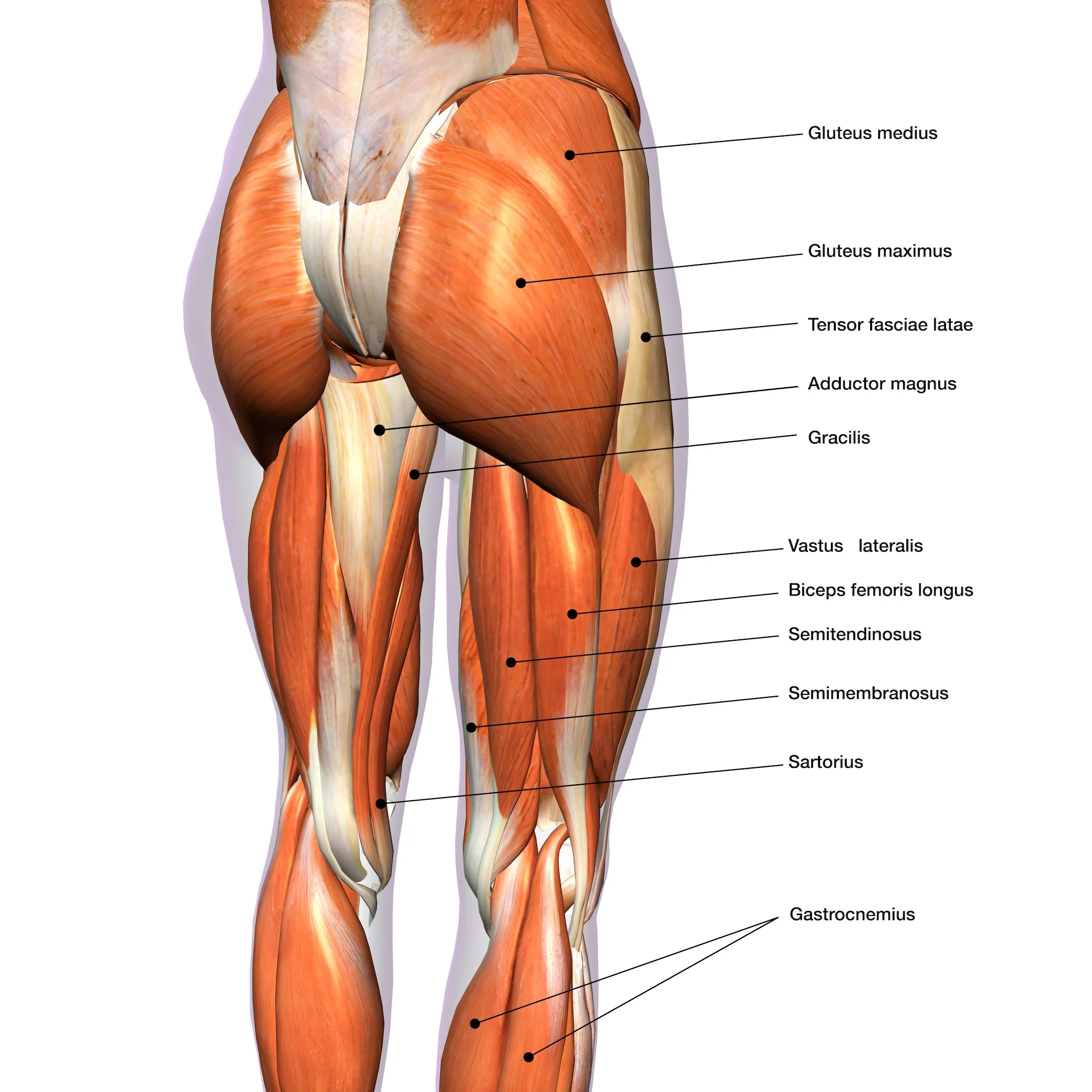Top 5 Exercises for a Better Deadlift
TOPIC: Strength & Conditioning
Joseph Lucero, owner of Harvesting Strength, is a powerlifter and strongman coach with years of practical S&C experience in high school, collegiate, and professional settings. Check out his guide on the incline bench and its variations.

Written By
Joseph Lucero
Joseph Lucero CSCS, owner of Harvesting Strength, is a powerlifter and strongman coach with years of practical S&C experience in high school, collegiate, and professional settings. His athletes have brought home powerlifting medals, strongman championships, and major bragging rights.
Programs
Website
Deadlifting Is For Everyone
For anyone dedicated to building strength, a top belief is that incorporating compound movements like the squat, bench, and deadlift are essential. Among these exercises, aka the “big three”, the deadlift emerges as one of the most challenging lifts of all. The deadlift demands you to pull a motionless bar (“dead” weight) to a locked-out upright position. This action finds its roots in Newton’s First Law of Motion:
“An object at rest remains at rest, and an object in motion remains in motion unless acted upon by an external force.”
In this case, that external force is you. If you lack the strength to defy these fundamental laws of physics, you’re left stranded on Schitt’s Creek (great show, by the way) without a paddle. And, a very heavy barbell.
Mastery of the deadlift holds immense significance, whether you’re a sprinter propelling from the blocks or a powerlifter engaging in competition. The art of mastering the deadlift parallels to several domains of life, too. Let’s dive into the anatomy of the deadlift, its distinctive attributes, and the top five exercises that contribute to a superior deadlifting performance!
The Anatomy of the Deadlift
The deadlift is a compound exercise that engages multiple muscle groups throughout your body. Here’s an overview of the key muscle groups involved in the deadlift, along with their locations and functions:

Hamstrings:
The hamstrings are located at the back of the thigh. Your hamstrings play a crucial role in extending and flexing your hips, aiding in the upward phase of the deadlift. They contribute to the initial pull off the ground.
Glutes:
The glutes are the butt muscles, the biggest and strongest muscles of the body. Glutes are known as the powerful hip extensors of the body. They are heavily engaged during the deadlift to help you lift your torso and hips from a bent position to an upright position.
Erector Spinae:
These muscles run vertically on either side of your spine. The erector spinae muscles help you maintain an upright posture by extending your spine. They work to keep your back straight and stable during the deadlift.
Quadriceps:
The quadriceps are on the fronts of your thighs. The quads straighten your knees during the lifting phase. They play a role in pushing your hips forward and locking out your deadlift.
Latissimus Dorsi (Lats):
The lats are the large muscles that span from your upper shoulder blade to your mid-back. The lats keep the barbell close to your body as you lift, providing stability and preventing the bar from drifting away from your center of gravity.
Trapezius (Traps):
The traps are the muscles in your upper back and neck. Your traps help stabilize the shoulder girdle and upper back, especially during the initial pull off the ground.
Top Five Exercises for a Better Deadlift
Below are the top five exercises for growing your deadlift! Not all exercises are a deadlift variation. However, these lifts have been proven to aid your performance in pulling bigger weights off the floor.
Trap Bar Deadlift
I absolutely love the trap bar deadlift. Think about this, if you are to do a traditional barbell deadlift, the weight is displaced in front of you 100% of the time. Biomechanically, the lift puts a ton of engagement on your postural muscles. In competition there is no escaping this characteristic of the deadlift, but for those who are struggling to maintain proper posture and better leg drive, using the trap bar deadlift helps put 100% of the resistance in the middle of your body.
This helps you learn better pulling mechanics. With the trap bar deadlift, you learn to stack your shoulders, knees, and ankles in order to lift with more leg drive.
It might not be ideal to do trap bar deadlifts RIGHT before a deadlift maxout, but plan to do the trap bar deadlift for the first 4-6 weeks of an offseason program to improve your mechanics for a vicious lift.
Farmer’s Walks
Most people who powerlift believe the farmer’s walk is ideal for training grip. However, farmers work way more than just simply grip. With the farmer walk, you need to have grip, back, and glute strength to take on the demands of carrying something heavy. Although you’re carrying a weight and not performing multiple reps as you would with a traditional deadlift, you do have to have the strength to maintain and support heavier loads. This is a great stimulus to change the pace of programming and break up the monotony.
For programming purposes, the farmer’s walk might not be necessary for the later stages of a peak, but this could be a secondary or a primary movement in your early offseason programming. Imagine using a trap bar for the farmer’s walk as well. Early in the offseason you could choose one week to do a heavy walk and speed trap bar deadlift, then the next week go heavy trap bar deadlift and do trap farmer walk for speed and endurance as well. So if you want to become a dangerous deadlifter, start doing some farmer’s walks!
Speed Deadlifts
I am more than sure that every person reading this article at some point has trained their deadlift with massive volume. I bet you have followed rep schemes of 3×6, 4×8, or something in that range. But instead of 3×6, why not 6×3? In this case, you hit the same volume, but redistribute the reps to help focus more on “fresh reps” and less on fatiguing movement.
Let’s face it, deadlift is an intense movement and very exhausting on the body. Many people who deadlift heavily begin to discuss their friend CNS and needing to go get IV therapy and some kinesiology tape before their next training session. Sometimes it’s not an exhausted nervous system, though. Sometimes you might just be physically exhausted, period. But have no fear! Let’s make this easier on you.
I believe to have a massive deadlift, try focusing on more sets and less reps. So instead of 4 sets of 8 reps, go 8 sets of 4 reps. And even better, why not drop the intensity. Instead of using the normal percentages that would go with a 4-rep scheme, go lighter in percentage. Now for your 8 sets of 4 reps, you can focus on submaximal weight for massive power, speed, and rate of force development. When I began deadlifting, I could barely squeeze out a 515 pound deadlift. After 12 weeks of only doing speed deficit deadlifts for 6×3…my deadlift jumped from 515 to 575, and I was only using 315 pounds for training!
It’s true what they say, y’all. Speed kills.
Isometric Deadlifts (No, Not Pause Deadlifts!)
I am not against pause deadlifts. However, I do think there are some other variations of the deadlift that should be explored and recognized. One of those is the isometric deadlift, a high-intensity variation that strengthens a specific range of motion that could very well be your sticking point.
To do the isometric deadlift, you need to be in a power rack. Set up the safety pins or J-hooks so that when you grab a barbell from the floor, you pull the bar up and hook it under the safety pins. Once you set up the isometric deadlift, you pull against the pins and try to move the entire power rack off the floor. Warning! This only works if you have a power rack or rig setup that is heavy enough or is bolted to the floor.
The idea is that the isometric deadlift is a strong, motionless contraction against the pins. You should aim to hold it as hard as you can for about 8 seconds. Set the hooks/pins in a position where you are the weakest for your deadlift. The idea is that because the barbell is motionless, you focus your strength in the part of your deadlift that needs the most work.
I would recommend doing the isometric deadlift the last 4-6 weeks of a peak, for about 5 sets of 8 seconds. Do it before your speed sets. That way, the isometrics provide a max effort stimulus and the speed sets provide a chance to practice your mechanics and break through that sticking point.
Sandbag and or Stone Training
Whether it’s a sandbag and atlas stone, we are basically looking for the same end result — improving hip strength. The sandbag and stone require a more flexed spine, which might make some people nervous. But when you deadlift heavy, there are times you lose your technique and begin to lift with a flexed spine. Either way, the idea of implementing strongman event training with a stone or a sandbag helps us prepare for potential breakdowns in technique that would occur in a max effort deadlift.
Some movements I like are sandbag or atlas stone box squats where the athlete sits, weight in lap, then stands up and pushes their hips through to finish. Another lift that could be more rigorous is the “sandbag over bar” in which you pick up the sandbag, hold it in your lap, then drive your hips through completely to get the load over a tall bar or onto a tall platform. Whatever the lift may be, using the sandbag and stone in these instances requires hip strength, hip mobility, and the courage to try loading your spine in a flexed position.
Give some of these movements a try in your next pulling session and see how they translate to a stronger, more stable deadlift!
Find Your Perfect Training Plan
Sometimes all you need to reach your destination on your fitness journey is an expert guide. Look no further, we've got you covered. Browse from thousands of programs for any goal and every type of athlete.
Try any programming subscription FREE for 7 days!
Related Articles
You May Also Like...
The Ultimate Guide to Lunges: Queen of all Glute Exercises
Your glutes are the largest muscle group in your body. They’re responsible for almost everything your legs do—walking, running, jumping, squatting, lunging, and just standing upright. As far as moving through space goes, strong glutes are the bedrock of overall...
A Beginner’s Guide to Steel Mace Training
Think you’ve mastered kettlebells? Meet the steel mace — the brutal, offset weapon that forces your body into three-dimensional stability, grip work, and rotational strength. Ancient tool. Modern performance.Written Byjesse grund Jesse Grund’s passion is simple: coach...
The Best Bench Press Warm Up Strategy
We get it. You’re pressed for time in the gym. But skipping the warm up is the surest way to underperform and risk injury. This 3D approach to your bench press warm up not only allows you to lift more weight, but also ensures the long-term health of your shoulder...
The Ultimate Guide to Lunges: Queen of all Glute Exercises
Your glutes are the largest muscle group in your body. They’re responsible for almost everything your legs do—walking, running, jumping, squatting, lunging, and just standing upright. As far as moving through space goes, strong glutes are the bedrock of overall...
A Beginner’s Guide to Steel Mace Training
Author: Jesse Grund
Mace training will make you a better mover without it’s not confining you to a fixed space or predetermined range of motion. Second, it’s an offset load with 80 to 90 percent of the weight in the head. You’re also constantly having to resist rotation, which creates greater core engagement.

Want more training content?
Subscribe
For Coaches
For Athletes
About
Support
Training Lab
Access the latest articles, reviews, and case studies from the top strength and conditioning minds in the TH Training Lab!
Made with love, sweat, protein isolate and hard work in Denver, CO
© 2024 TrainHeroic, Inc. All rights reserved.





